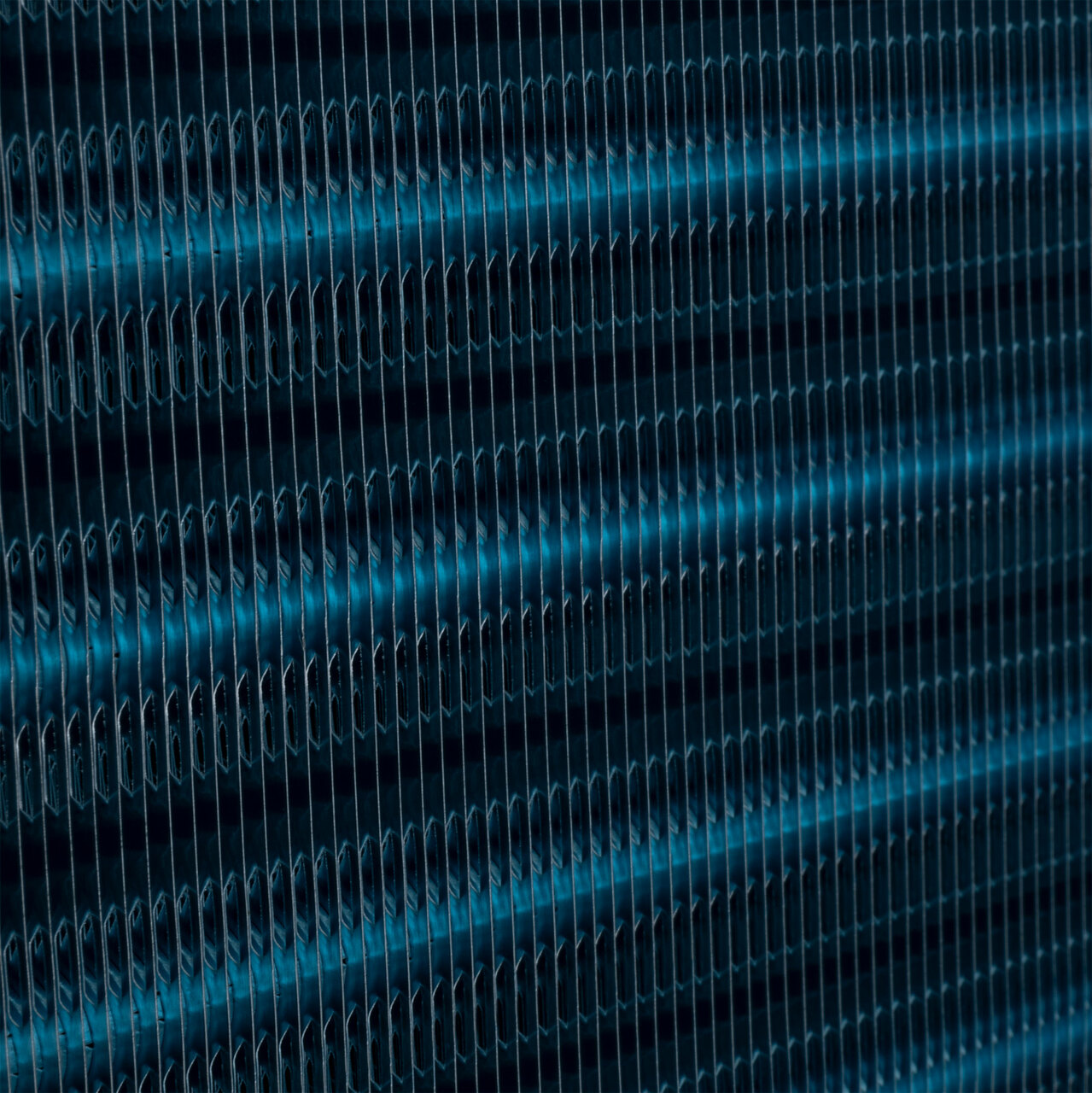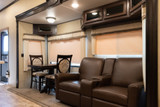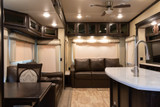Get to Know the RecPro Quiet AC Units by Houghton
RV air conditioners are notoriously loud, and many people have just accepted that as a fact. Air conditioners rely on vapor-compression refrigeration to cool your space, whether in your RV or home. Vapor-compression refrigeration systems, or VCRS, work to remove heat from the ambient air and return cooled air into the space by circulating refrigerant through a cycle of phase changes in a closed-loop system. VCRS involve spinning fans and running motors, which, when attached to your RV's metal roof, can cause loud vibrations with little sound dampening. Most RV air conditioner manufacturers see this as a problem that can't be solved.
To address the seemingly unfixable problem of loud RV air conditioners, RecPro teamed up with Houghton Leisure, a family-owned company with over 40 years of experience designing air conditioners in the Australian Outback, to provide a solution.
Before directly addressing the features of RecPro's line of quiet AC units, I first want to explain the basics of how vapor compression refrigeration systems work. I will start by discussing the relationship between temperature, energy, and pressure, then break down the refrigeration cycle step by step. After that, I will explain the design features of RecPro's quiet line of AC units by Houghton.
Temperature, Energy, & Pressure
The mechanism by which vapor-compression refrigeration systems cool space can be challenging to comprehend because it requires an understanding of the relationship between temperature and energy - otherwise known as thermodynamics. When we think about temperature, we typically think of "hot" and "cold," but technically, temperature is the concentration of energy in a given space.
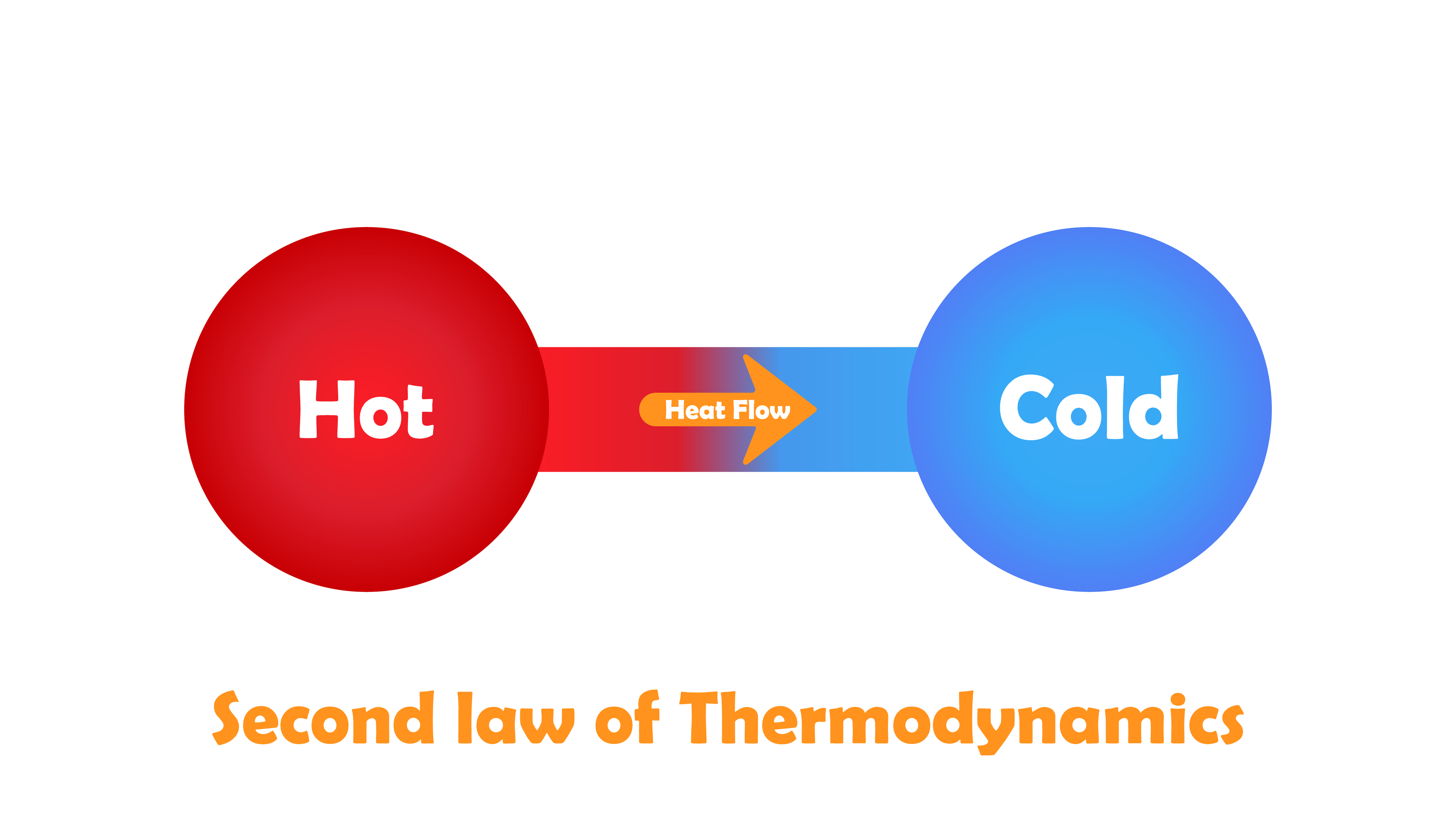
To understand air conditioning, think of heat as a measure of how much thermal energy is in a space. To reduce heat, you must reduce thermal energy. Air conditioning cools your room by removing thermal energy from your space and displacing elsewhere. Energy will naturally move from high to low concentrations, which is called heat transfer and follows the second law of thermodynamics. There are two instances of heat transfer during the refrigeration cycle.
Following the first law of thermodynamics, we know that energy cannot be created or destroyed, only altered. Pressure is one way to manipulate the energy within a closed system. Pressure and temperature are directly related for a gas held at a constant volume (like refrigerant within your AC unit). Increasing the gas pressure will raise the temperature, and decreasing gas pressure will lower the temperature. The vapor-compression refrigeration cycle uses changes in pressure during the compression and expansion phases to facilitate heat energy transfer out of your space.
The Refrigeration Cycle
"Cycle" refers to the regular repetition of an event in a continuous order. The refrigeration cycle of your air conditioner continuously moves refrigerant through a series of mechanical events that manipulate pressure and, therefore, energy and temperature. This process enables your AC to absorb heat from one side and expel heat out the other.
Read to learn more about the 4 phases of the refrigeration cycle!
Compression
The refrigeration cycle starts with compression, which increases the pressure, and therefore the temperature, of the refrigerant within a closed system. The piece of equipment responsible for this transformation has aptly been named the compressor. Low-pressure, low-temperature refrigerant enters the compressor and leaves as high-pressure, high-temperature refrigerant.
Condensation
After leaving the compressor, the high-pressure, high-temperature refrigerant enters a piece of equipment called a condenser. The condenser is the first location of 2, where heat transfer occurs in the refrigeration cycle. The piping hot refrigerant moves through condenser coils surrounded by air that has less heat energy than what is inside the coils. Remember earlier when I mentioned that energy wants to move from an area of high concentration to low concentration?
As the hot refrigerant moves through the coils, the heat energy wants to find an area with a lower concentration: the surrounding external air. Heat energy is removed from the system and expelled outside. As heat is lost, the refrigerant is transformed into a saturated liquid state before passing through to the next step in the refrigeration cycle.
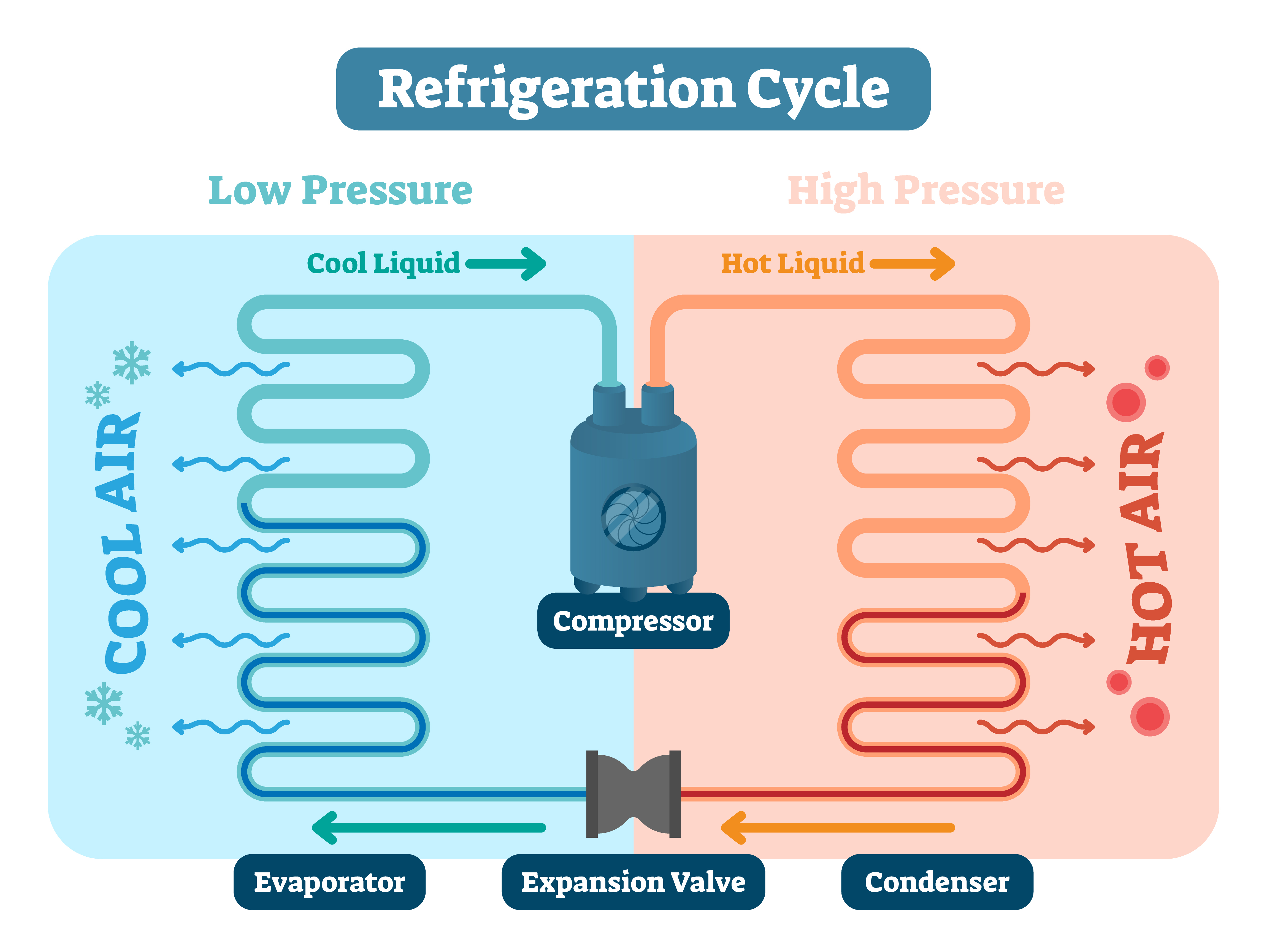
Expansion
The expansion valve, also called the metering valve, controls the flow of refrigerant through the system and allows for a smooth transition between the condensation phase, which operates under high pressure, and the evaporation phase, which operates under low pressure. The metered expansion valve limits the amount of liquid refrigerant that can pass through. Since only a tiny percentage of the refrigerant makes it through the valve, the pressure on the other side of the valve is drastically lower. The refrigerant enters the expansion valve as a high-pressure liquid and exits the valve as a low-pressure, low-temperature liquid primed for the next step.
Evaporation
Evaporation is the second heat exchange that occurs during the refrigeration cycle. Whereas condensation expels heat from the system, evaporation absorbs heat and moisture inside your space. It may be easier to conceptualize the evaporation phase as the beginning of the cycle because it captures heat energy that will later be expelled during condensation.
During the evaporation phase, the low-temperature liquid refrigerant flows through coils in front of a blower fan. As the warm air from the fan passes over the cold coils, heat energy is drawn out of the air into the refrigerant because that is where energy concentration is the lowest. By removing heat energy, your AC unit effectively cools your space.
Heat Pump
Some RV air conditioners can function as a heat pump in addition to an air conditioner. When acting as a heat pump, your air conditioning system is running in the opposite direction to absorb heat energy from outside and deposit it into your space. This function requires a reversing valve, which is not standard in all AC units.
RecPro Quiet AC Units by Houghton
RecPro offers a quality line of quiet RV air conditioners that vary in BTU size, ducting options, and heat pump functions to fit your individual needs. The Houghton Design team set their sights on improving airflow and heat transfer within their units, thus reducing noise and increasing efficiency.
Noise Reducing Features
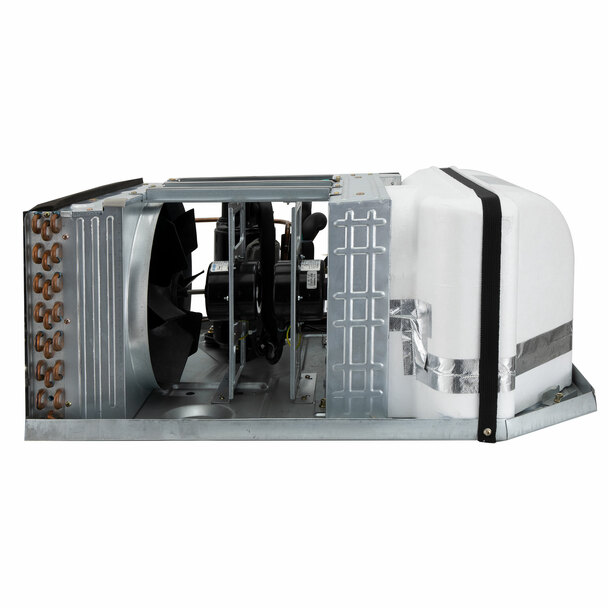 Houghton air conditioners top out at 59.1 dB for indoor noise levels running at high speed, while the nearest AC competitor system produces 68 dB of noise running at high speed. These AC units are objectively quieter than competitors, but how is this achieved? Let me tell you.
Houghton air conditioners top out at 59.1 dB for indoor noise levels running at high speed, while the nearest AC competitor system produces 68 dB of noise running at high speed. These AC units are objectively quieter than competitors, but how is this achieved? Let me tell you.
Spring Mounted Compressor
By spring mounting the compressor, vibration transfer from the compressor motor to your RV frame is significantly reduced. This, in turn, lowers noise levels, especially while inside the RV.
Independently Functioning Dual-Fans
Most RV air conditioners only have one blower fan, which must constantly run to provide adequate airflow to the system. RecPro's line of air conditioners by Houghton features two independent fans to distribute the work.
The inside fan is a forward curved centrifugal fan which is best for moving high-pressure air at low speeds. Running at a low speed dramatically reduces the noise production of the system. The outside fan is an axial fan that can move large volumes of air at low pressure, which is perfect for expelling large amounts of heat energy from the system. By having two independent fans instead of one, the AC unit can move larger air volumes without overworking, simultaneously reducing noise levels.
Efficiency
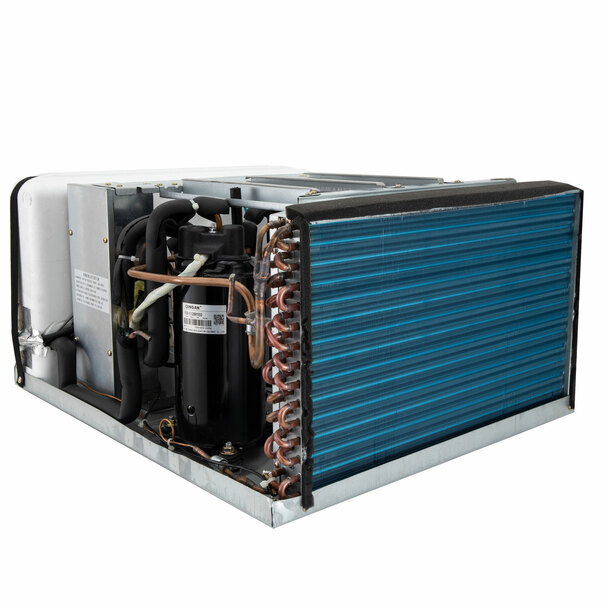 Noise reduction and efficiency go hand-in-hand when talking about air conditioners. The harder an air conditioner runs to keep a space cool, the noisier it will be. Houghton has designed their air conditioners to be quiet, efficient, and powerful while still being able to function in hot ambient conditions.
Noise reduction and efficiency go hand-in-hand when talking about air conditioners. The harder an air conditioner runs to keep a space cool, the noisier it will be. Houghton has designed their air conditioners to be quiet, efficient, and powerful while still being able to function in hot ambient conditions.
Large condenser coils
More heat exchange can occur by increasing the condenser size and overall surface area of the coils. Air conditioners rely on removing heat from your space, so the more heat exchange, the better! Increasing surface area can negatively impact airflow if not designed carefully. Houghton addressed this by incorporating internal spiral grooves in the cooper tubing and 'double bridge' aluminum fin design. Both of these features improve heat transfer without a significant airflow penalty.
Heat Pump Functionality
We briefly discussed heat pumps above and how they function as reverse air conditioners to pull heat from the outside air and deposit it into your space. While heat pumps typically cannot be used as a total replacement for your heater since they struggle to operate below freezing, they can function in milder temperatures to control the climate inside your rig. Heat pumps usually run off less power than heaters.
Not all air conditioners can function as heat pumps, only those with reversing valves can. As the name implies, this valve can reverse the refrigeration cycle to deposit heat inside instead of outside.
Built to Last
Houghton went the extra mile to design an air conditioner that runs well and lasts long. As mentioned above, the increased efficiency of Houghton's air conditioners means the units don't have to run as hard to cool your space. Additionally, the evaporator and condenser coils are coated with a thin polymer over the fins to reduce corrosion and disperse moisture. Pictured to the left, you can see a blue tint which is the polymer coating. Typically, evaporator and condenser fins are left as bare aluminum, which can corrode over time due to moisture exposure. These small details pay off in the long run.
If you are tired of your loud RV air conditioner disturbing your peace and quiet, consider replacing your stock unit today! The customer service team is happy to answer any questions you may have and assist with ordering your new, quiet RV AC unit today. If you feel like you learned a lot from this article, and would like to see more technical topics covered in the future, drop a suggestion below.
Recent Posts
-
How to Keep Your Pets Safe While Camping
RVing and camping are a great getaway from the hustle and bustle of work and the city and the day-to …Jul 2nd 2024 -
Why Replace Your RV Furniture?
You may wonder when is the best time to replace your RV furniture. There is no one right answer to t …May 20th 2024 -
Can You Put Regular Furniture in an RV?
Many new and old RV owners ask themselves this question when they feel the need to update th …Apr 25th 2024 -
4 Tips for Securing RV Furniture While Traveling | RecPro
How To Secure RV Furniture There are few things that beat going out on an adventure with an RV …Apr 25th 2024 -
How To Keep RV Furniture From Peeling
Peeling RV Furniture | Why it Peels and How to Stop it Your RV furniture is a point of pride on yo …Apr 25th 2024 -
Turning up the Heat With an RV Fireplace
There’s an unlimited number of cool and exciting features you could add to your recreational vehicle …Apr 25th 2024


